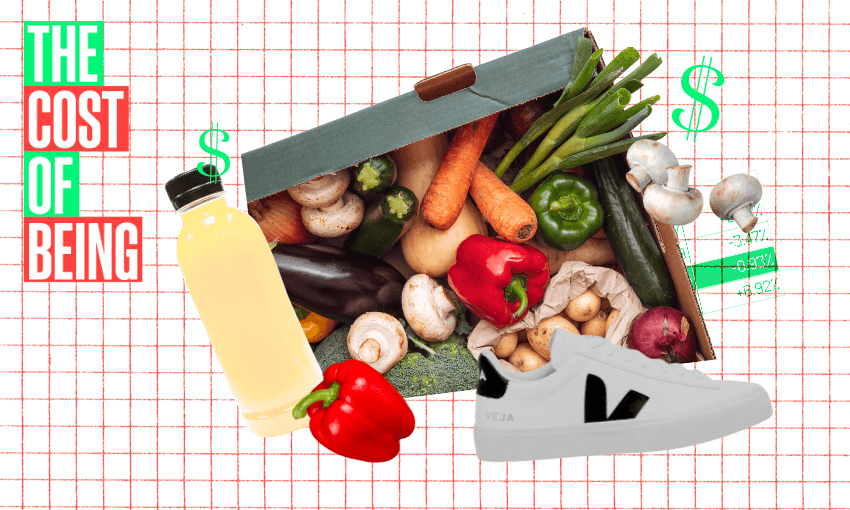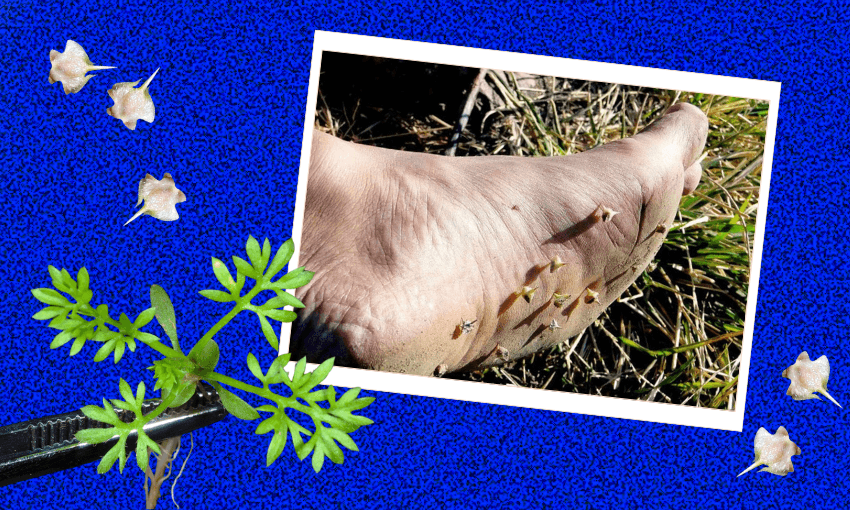As part of our series exploring how New Zealanders live and our relationship with money, a young PR consultant with flights booked to Europe explains their approach to spending and saving.
Want to be part of The Cost of Being? Fill out the questionnaire here.
Gender: Male/non-binary.
Age: 23.
Ethnicity: Pākehā.
Role: PR consultant for a corporate communications agency.
Salary/income/assets: $4,287 a month after tax.
My living location is: Urban.
Rent/mortgage per week: $530 a week in rent, between myself, my partner and a flatmate.
Student loan or other debt payments per week: $408 a month towards a student loan.
Typical weekly food costs
Groceries: Around $120 a week, feeding three of us. We’re all vegetarian and receiving a Wonky Box helps keep costs down.
Eating out: I rarely eat out, maybe once every two months. My partner and I usually spend around $110 when we do.
Takeaways: $30 a week, though it can sometimes be more. All depends on whether someone is home and available to cook dinner.
Workday lunches: $30 a week and my biggest weak spot.
Cafe coffees/snacks: Close to zero, don’t drink coffee and purchase my snacks as part of the supermarket shop.
Savings: $250 a week. This goes towards a range of things, but primarily healthcare, overseas travel and my student loan.
I worry about money: Sometimes.
Three words to describe my financial situation: Fortunate, junior, comfortable.
My biggest edible indulgence would be: Jazz apple juice.
In a typical week my alcohol expenditure would be: $0, I’ll buy a drink on a night out but don’t drink at home.
In a typical week my transport expenditure would be: Around $40 a week, $10 on petrol and $30 on public transport.
I estimate in the past year the ballpark amount I spent on my personal clothing (including sleepwear and underwear) was: $600. I only buy secondhand or as ethical as possible. I purchase with the intention of wearing an item for at least a year, if not two or three.
My most expensive clothing in the past year was: A pair of Veja sneakers, $300. I spent a few months saving for them and it was worth it.
My last pair of shoes cost: $45, a pair of brand new Zara boots found at the secondhand store.
My grooming/beauty expenditure in a year is about: $90. I cut my hair at home and receive a skincare subscription.
My exercise expenditure in a year is about: Around $400 for my indoor football league and equipment.
My last Friday night cost: $200 for a birthday dinner and drinks for myself and some friends.
Most regrettable purchase in the last 12 months was: A pair of shoes I saw online, didn’t last long. $250 down the drain.
Most indulgent purchase (that I don’t regret) in the last 12 months was: Flights to Europe, this has been in the works for a while and I feel proud that it’s finally happening.
One area where I’m a bit of a tightwad is: Impulse purchases. I try my best to spend within my means and save up for the more expensive purchases.
Five words to describe my financial personality would be: Developing, responsible, consistent.
I grew up in a house where money was: Present but not talked about. I’m fortunate that my parents had stable incomes and have looked to copy some of their behaviours.
The last time my Eftpos card was declined was: Last week, I don’t keep a lot on my card in case it’s stolen.
In five years, in financial terms, I see myself: Almost back to zero, most of my savings will go towards an OE.
Describe your financial low: At the end of 2020, right after the first lockdown. I had decided to move out of home and it was the first time I really got an understanding of how much things cost in relation to how much I was earning. It took a while to learn how to cut back and live on an appropriate budget.
I would love to have more money for: Saving for a house or more travel. I don’t feel I need more money for day-to-day expenses, though always happy to spend more on good food.
I give money away to: I always purchase extra food for the food banks when doing a supermarket shop. I also look to spend money on my partner where I can.




